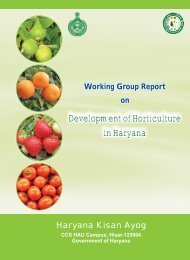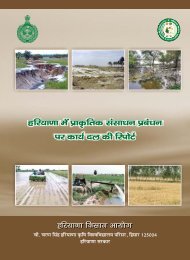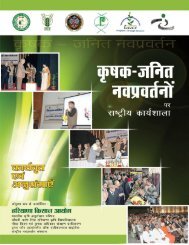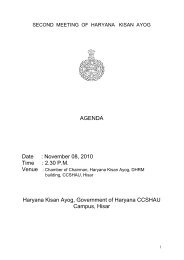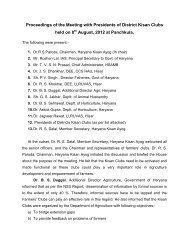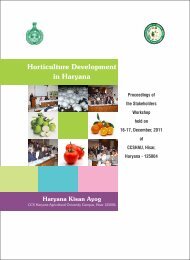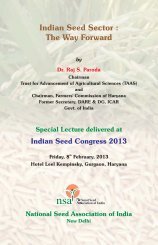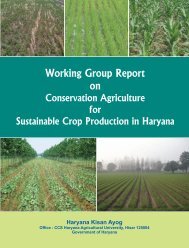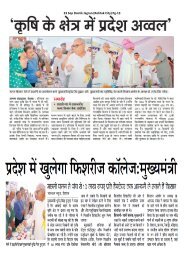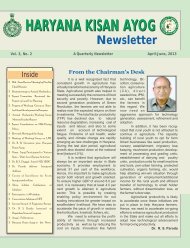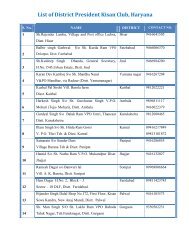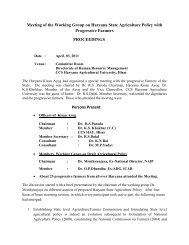Working Group Report on - Haryana Kisan Ayog
Working Group Report on - Haryana Kisan Ayog
Working Group Report on - Haryana Kisan Ayog
- No tags were found...
You also want an ePaper? Increase the reach of your titles
YUMPU automatically turns print PDFs into web optimized ePapers that Google loves.
d) Threats• Increasing and competing demand for land and water resources due togrowing urbanizati<strong>on</strong> and industrializati<strong>on</strong> in the State aided by itsproximity to Delhi NCR implies escalating cost of increasingly scarce landand water resources in the State and the subsequent unavailability of themfor fish culture. The challenge lies in using marginal land and water areas foraquaculture profitable through innovative technologies and management.• Exotic fishes like African Magur, Tilapia, Silver Carp and Comm<strong>on</strong> Carp haveentered the natural water bodies of <strong>Haryana</strong> and have c<strong>on</strong>tributed to thedepleti<strong>on</strong> of aquatic biodiversity. Their c<strong>on</strong>tinued presence is likely to furthercol<strong>on</strong>ise the waterbodies and reduce the habitat for indigenous fishes.• Possibility of technological failures in fragile areas: Since the technologiesfor inland saline areas are being perfected and dem<strong>on</strong>strated, it is necessaryto have adequate safeguards and sustainable management practices inplace during the adopti<strong>on</strong> and diffusi<strong>on</strong> phase so that the salt accreti<strong>on</strong> /accumulati<strong>on</strong> expected from a large scale saline aquaculture farming doesnot further deteriorate the delicate ground water balance.• Governance and management failures: Many of the developmentbottlenecks are governance and management related rather than technologyoriented and hence, require reforms in governance including effective inputand services delivery system, putting transparent, fair and m<strong>on</strong>itor ableprocesses in place, developing necessary infrastructure and human capital,etc. Hence, the success or failure of new programs and strategies wouldhinge <strong>on</strong> them as much as, if not more, <strong>on</strong> the technological aspects.• Market anomalies and failures: The input costs especially in the form oflabour, fertiliser and quality feed have risen steadily while the market pricesof food fish have risen <strong>on</strong>ly marginally during the last decade. This implieslower profitability unless productivity rises significantly or high market valuefish species is opted for aquaculture. Labour shortage due to programs likeMGNREGS is already affecting the primary labour intensive sector.( 29 )



